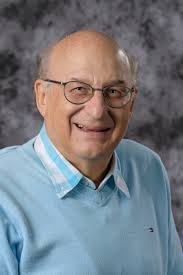Special Seminar: Mikhail Shifman on the history of quantum mechanics
Quantum physicists between two evils
Theoretical breakthroughs made by the "old guard” at the very beginning of the 20th century –– Planck, Bohr and Sommerfeld, and Einstein — were a prelude on the road to the quantum world. The so-called New Quantum Mechanics, the actual revolution, occurred in the mid 1920s to early 1930s, when a consistent quantum mechanical theory was constructed and the development of applications started. The pioneers of the second wave were young, all of them born in the first years of the 20th century, e.g., Heisenberg in 1901, Dirac in 1902, and so on. Their scientific youth and most productive years coincided with the European catastrophe. National socialism in Germany, originally a marginal movement, triumphantly culminated in January of 1933 with Hitler at the helm of Germany, the most powerful country of Europe, and the scientific Mecca of that time. On the other side of the continent, in the USSR, a gigantic social experiment was in full swing, a brutal attempt to engineer a classless society with proclaimed universal equality and prosperity. Behind the iron curtain, innocent people were being murdered by the millions for the sake of a proclaimed radiant future. The young quantum pioneers — many of them either left-leaning or Jewish (or both) had to flee, but where?
In this talk, I will tell the mostly unknown stories of some of those who were caught between the two evils. Among them are Hans Hellmann, the pioneer of quantum chemistry, Fritz Houtermans, who was the first to suggest the fusion nuclear reaction as the source of star energy, George Gamow, who realized that alpha radioactivity was due to quantum tunneling, George Placzek, Lise Meitner, and others.
Category
